14 Fascinating Facts You Never Knew About Lamborghini

Born into a family of grape farmers, Ferruccio Lamborghini was far more interested in mechanics than cultivating crops. After a stint in the Italian Air Force during World War II, he melded his passion with that of his family’s business when he started building tractors for working the fields. Lamborghini’s innovations were a smashing success and he was soon wealthy enough to afford the pinnacle of automotive engineering: a Ferrari. But he quickly found issues with the vehicle that he wanted to address with il Commendatore himself, Enzo Ferrari.
In 1962, Lamborghini drove to the factory in Maranello and told Ferrari that his clutch wasn’t quite right. Ferrari’s rumored rebuke? Somewhere along the lines of: “The car is fine. You just don’t know how to drive it.” Incensed, Lamborghini vowed to make a perfect car, far better than anything from Ferrari. A year later, Automobili Lamborghini was founded in Sant’Agata Bolognese. What emerged from that assembly line would forever better the automotive world.
More from Robb Report
Lamborghini's New Temerario Supercar Is a 907 HP Hybrid Beast
Car of the Week: This Rare Lamborghini Murciélago Roadster Could Fetch $1.75 Million at Auction
Unveiled under the banner Automobili Ferruccio Lamborghini, the 3.5-liter V-12-powered coupe had a power train designed by the famed Giotto Bizzarrini. The “350” represented the engine displacement, while the “GT” signified it was a grand tourer. The V? That stood for “Veloce,” the Italian word for “fast.” Alas, it was never completed as a drivable car because the body panels wouldn’t fit around the engine. Lamborghini did go on to create his first mass-market vehicle, the 350 GT, in 1964. A total of 120 examples were made.
Here are 14 more interesting facts about Lamborghini.

Lamborghini’s logo, a charging bull, has a double meaning
Ferruccio was born on April 28, 1916, giving him the zodiac sign of the Taurus, a bull. Furthermore, Ferruccio was a big fan of Spanish bullfighting, which is why the logo captures the moment before the beast springs forth.
In 1966, the stunning Miura emerged as Lamborghini’s first supercar
The marque really landed on the map when it debuted the Miura at the 1966 Geneva Motor Show. The mid-engined machine was designed by Bertone and less than 770 units were built between 1966 and 1973. Miura, by the way, was the name of a famous Spanish breeder of fighting bulls.

The Urraco debuted right when the production run of Miuras ended
Urraco, which translates to “little bull,” is a 2+2 sports car that was a historically significant model. Not because it was super powerful or performance-oriented (The Urraco maxed out with a 3.0-liter V-8, good for 247 hp), but because it started a line of “more affordable” Lamborghinis. The Urraco’s successor was the Silhouette, then came the Jalpa, then the Gallardo and finally the Huracán—a model still currently selling.

The Huracán sold as much as the Gallardo, but in half the time
It took the Gallardo a decade before the 14,022nd vehicle rolled off the assembly line in 2013. The same number of Huracáns had been created only five years after the model line began.
The Huracán Evo thinks about the driver—a lot
The Huracán Evo boasts a neat first: Lamborghini Dinamica Veicolo Integrata. This predictive technology taps into the vehicle’s ECU, controlling all aspects of the car’s behavior, while measuring all driver inputs. This helps anticipate the driver’s next move and the car can alter its setup on the fly to ensure a perfect dynamic response.
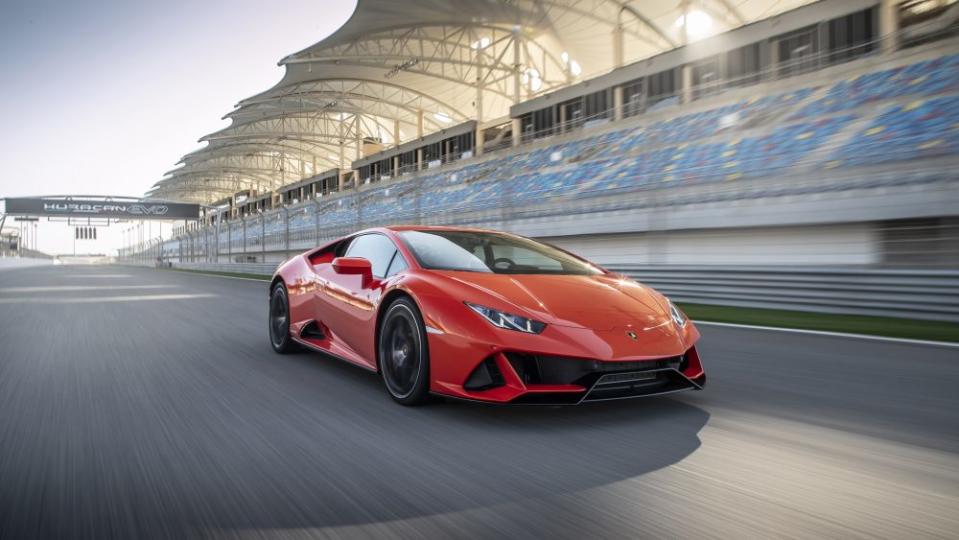
The Huracán Performante is the spec you might most covet
In this tune, the 5.2-liter naturally aspirated V-10 generates 631 hp and 443 ft lbs of twist, a nice boost from the 602 hp and 413 ft lbs in the base LP610-4 Huracán. It has a zero-to-60 mph time of less than 2.9 seconds and tops out at 202 mph. In 2017, the Huracán Performante set a Nürburgring-Nordschleife lap record in 6:52. (For reference, the Porsche 918 Spyder ran it in 6:57 and Lamborghini’s own Aventador turned in a 6:59.)
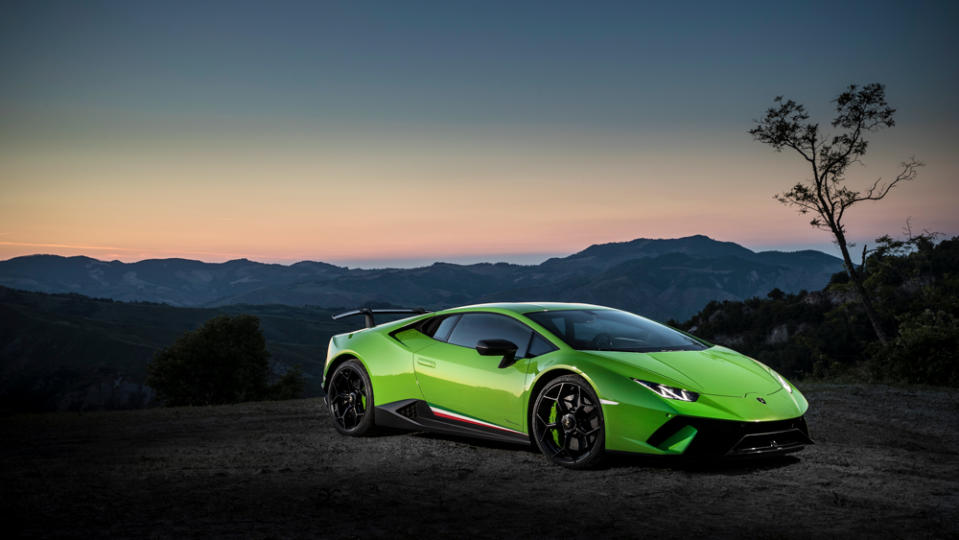
There’s also a Huracán Polizia version
The Italian Highway Patrol uses a Huracán with police badging and a lightbar on the autostradas in and around Bologna. The vehicle is also used whenever blood or human organs require urgent and speedy transportation. There’s another Huracán in use by Rome’s highway patrol division as well.
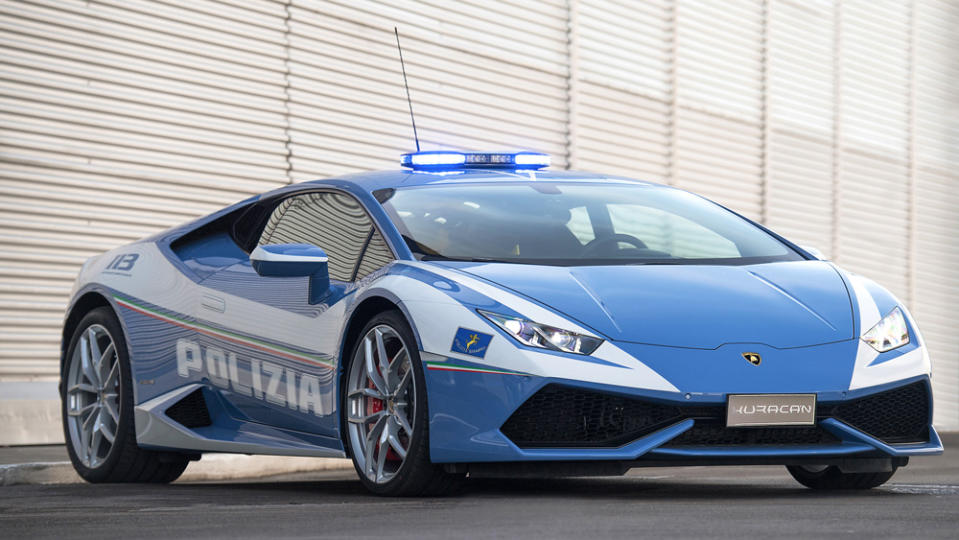
The Aventador SVJ was the biggest bull in Lamborghini’s ring
The successor to the Murciélago, the Aventador packs a 6.5-liter naturally aspirated V-12 that will wake the dead. Available are 690 horses and 509 ft lbs of torque, which is plenty enough to get the Aventador hauling to 60 mph in 2.9 seconds or less. Step up into the SVJ, however, and everything goes insane. Those letters stand for “Super Veloce Jota,” or Super Fast Race Car, since Jota refers to a racing class in the FIA’s appendix J. Only 900 units were promised.
The Aventador SVJ broke a lap record at the Nürburgring-Nordschleife in 2018
The Aventador SVJ features a ton of weight-saving carbon fiber and titanium to help keep it light. In addition, its engine gets tweaked up to 759 hp and 531 ft lbs of torque so that the car can hit 60 mph in less than 2.8 seconds and reach a top speed of 219 mph. It bested Porsche’s 911 GT2 RS at the Nürburgring-Nordschleife, turning in a scorching 6:44 lap time.
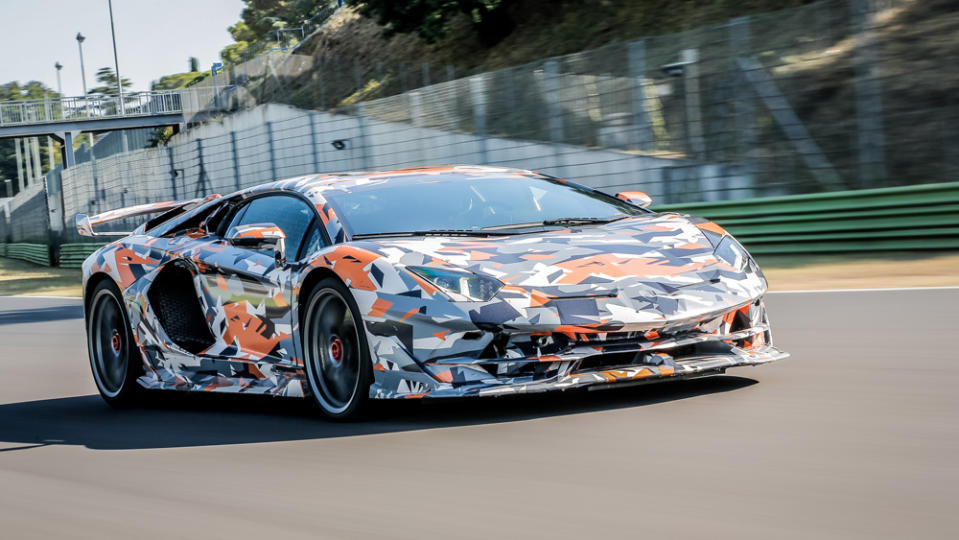
Lamborghini’s best-seller is an SUV
With a versatile chassis and adaptable suspension, the Urus can tackle everything from snow to sand to a full-blown racetrack. It debuted in 2017 and was instantly a hit. In 2019, its first year of full market availability, Lamborghini’s SUV sold nearly 5,000 units, bolstering the marque’s overall global sales by 43 percent over the prior year. Under the hood is a modified version of Audi’s 4.0-liter twin-turbo V-8 that’s tuned to 641 hp for the Urus.
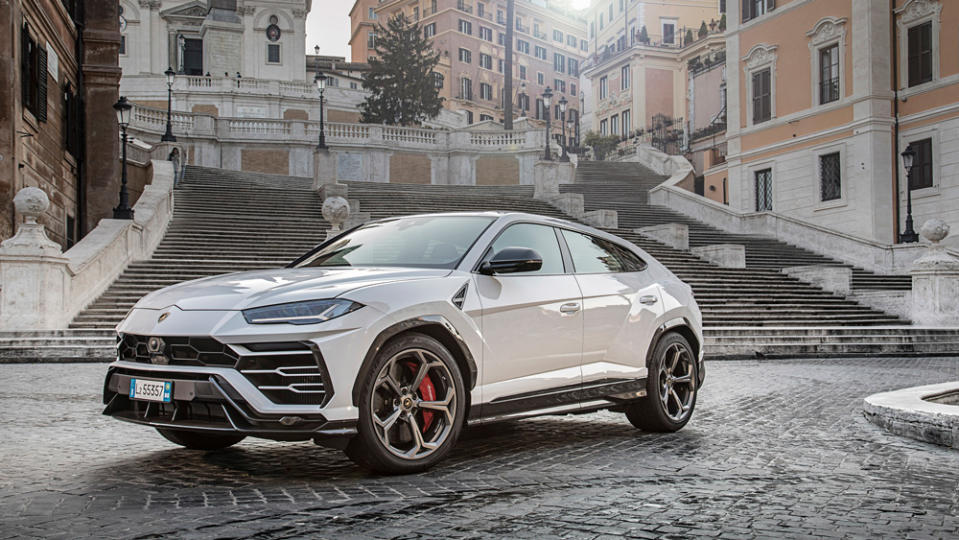
When it debuted, the Urus concept had a V-10
The Urus was first shown at the 2012 Beijing Auto Show, and engineers had borrowed a 5.2-liter V-10 from the Gallardo for the affair. It was theoretically rated to 592 hp and had an all-wheel-drive system. The sharp lines and angles in the exterior bodywork were a nod to the company’s flagship Aventador.
Lamborghini almost didn’t survive
The graveyard of dead supercar companies is a crowded one, and for many years in the late 1970s and 1980s it looked like Lamborghini might be among there, too, having gone into receivership in 1977 and, around a decade later, getting scooped up by Chrysler. Back then, Lamborghini was making just 450 cars a year. But the Countach, and then the Diablo, saved it. In 1998, Lamborghini ended up in the hands of the Volkswagen Group and Audi and hasn’t looked back ever since.
The Diablo made some concessions for comfort, believe it or not
The Countach was famously a bear to drive, as difficult as it was to operate as it was nice to look at. With the Diablo, Lamborghini tried to do better for the driver, offering more comfortable seats, better front and rear visibility, air conditioning, and even bespoke luggage for the very small trunk, though features varied by model. The Diablo was also expensive, or around $239,000 for the Diablo VT in 1995, some $500,000 today, more than even the very best Porsches back then. By then, the Diablo was already helping Lamborghini turn the tide.
The Lamborghini Gallardo tried to be even more driver-friendly
The Gallardo, built beginning in 2003, was intended to be a notch below the Murciélago in performance, price, and style of door opening, a Lamborghini with creature comforts that one could also, possibly, commute with in a pinch, if one’s Volvo was in the shop or if one merely wanted to send a message to colleagues at the office. The Gallardo had all-wheel-drive and also an automatic transmission with paddle shifters optional, and bespoke luggage, too. No one would call it an ideal daily driver but the Gallardo was an enormous success, regardless, with more than 14,000 built. Historically speaking, that was almost mass market for Lamborghini.
Best of Robb Report
Sign up for Robb Report's Newsletter. For the latest news, follow us on Facebook, Twitter, and Instagram.

